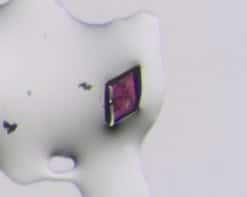Information encoded in DNA has been embedded within ordinary objects using a new technique that could lead to self-replicating machines.
The breakthrough was made by a team led by Yaniv Erlich of Erlich Lab LLC and Robert Grass at ETH Zurich. They used the technique to incorporate replication instructions into a 3D-printed rabbit. They then reproduced five successive generations of rabbits from tiny extracted fragments containing DNA. The result paves the way for new applications in a diverse array of fields including the storage of medical information and self-replicating machines.
Humans are creating rapidly-growing amounts of data and even the latest, most compact storage systems such as hard drives struggle to keep up. DNA could be a solution because it offers a versatile, robust and efficient way of storing and replicating information. DNA, for example, is the only known storage medium that can exist as a liquid.
Tiny silica beads
The team’s technique begins with encoding information onto molecules of DNA, and then encapsulating them within nanometre-scale silica beads. Then these beads are fused into functional materials, where they could remain indefinitely. The information is retrieved by taking a sample of the DNA and sequencing it (see video).
An important feature of the technique is that all of the stored information can be retrieved from just a tiny fragment of the material. This means that data could be stored throughout an object in a highly redundant manner.
Furthermore, the protective silica minimizes any degradation of the DNA structures over the material’s lifespan. Unlike current hardware devices, whose storage capabilities can be compromised by physical damage the memory stored in these materials could never be altered.
Reproducing like rabbits
Once they had established their storage technique, Elrich, Grass and colleagues pushed the DNA paradigm further to embed an object with DNA that encodes instructions for reproducing that object – in analogy to living organisms They made a 3D-printed rabbit containing 45 kbyte of printing instructions within embedded DNA.

Data storage in DNA gains from a larger ‘alphabet’
By extracting just tiny fragments containing DNA from the rabbit, they had the blueprint for producing a next-generation object. They were able to repeat this process to create five generations of the rabbit – each replicating the memory of the previous generation, without the need to synthesise new DNA.
The team’s achievement could lead to significant new advances in data storage. Since 1 g of DNA can store up to 215 Pbyte of data, their technique could allow for storage densities orders of magnitude higher than current hard drives. They predict applications ranging from embedding electronic health records in medical implants, to constructing buildings which contain their own blueprints. With further research it could be possible to create machines that use raw materials to automatically replicate themselves over many generations.



